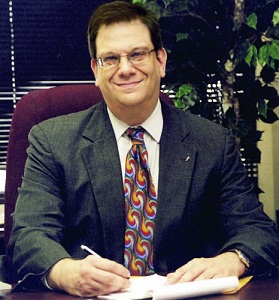March 2016, Vol. 243, No. 3
Editor's Notebook
PG&E: A Company That Has Seen the Light When it Comes to Safety

In these times when we as a society and as an industry are surrounded by blatant insults, public tantrums and overdone political correctness, it’s refreshing to know there is a company that’s doing something the right way.
Pacific Gas and Electric Co. has not always done things the right way. It’s most notable today for the Sept. 10, 2010 pipeline explosion that leveled an entire neighborhood in the city of San Bruno, leaving eight people dead, many more injured, and a permanently scarred community. The company was found to be at fault and has been heavily fined and penalized by government officials and regulators with other court cases still pending.
There is a light at end of the proverbial tunnel that is shining more brightly as each day passes. While no company can ever expect to fully recover from such a disaster, when you’re a multibillion-dollar business employing thousands of people that supplies energy products to millions, you can’t walk away. Instead, you begin the incredibly complex process of rebuilding. The first and most important strategic move the PG&E board made was to hire East Coast utility executive Nick Stavropoulos to direct this Herculean effort.
It was an assignment few would have had either the willingness or the ability to take on. But Stavropoulos, a man filled with a compassion for humanity partly borne from his own personal heartache and a determination to succeed, came well-equipped for the long haul. There have been bumps along the way, but nearly five years into the job, he and his talented staff continue to remake a shattered company, rebuild public trust, and create a world-class utility fully committed to operational excellence. It’s a company that has lived up to its pledge of transparency, and is willing to share its lessons-learned with others in the hope that another San Bruno never happen again.,
Let’s review some of PG&E’s accomplishments.
Last month the company announced completion of the 11th of 12 recommendations from the National Transportation Safety Board in the wake of San Bruno. This involved installing the recommended number of automatic and remote control shutoff valves on gas transmission lines. The remote-controlled valves can be opened or shut at PG&E’s new state-of-the-art gas control center in San Ramon. Automatic valves were also installed where transmission lines cross major fault lines.
Last year PG&E replaced all of its known cast-iron pipe a year ahead of schedule. The utility is also inspecting its entire 6,700-mile transmission system and has replaced 127 miles of pipeline. PG&E has improved response time to gas odor reports to an average of 20 minutes, which it says is among the top 10% of gas utilities nationally.
These achievements have not gone unnoticed. PG&E is the first U.S. company to satisfy API RP 1173, a new industry standard for pipeline safety management systems and safety culture; it is one of the first utilities in the world to receive PAS 55-1:2008 and ISO 55001-2014 certifications for best-in-class asset management.
Recently the University of Dayton credited PG&E’s $254,362 contribution for research to develop an automated monitoring system to detect threats or damages to pipelines, particularly near rights-of-way. And In an acknowledgment of its diversity – the factor that makes America this wondrous nation – PG&E was just named as one of the best places in the country to work by the Human Rights Campaign.
Of course Stavropoulos has not done this alone. He has surrounded himself with many of the best brains in the gas industry including senior vice president of Gas Operations Jesus Soto, who earned a stellar reputation at El Paso Corp. There are others, too numerous to name, who also deserve credit for this remarkable – and continuing – turnaround.
Talk is cheap; action only means something if there is a tangible sense of accomplishment. When you run a gas company, the volatile nature of the product never allows you to relax. The day will come when Nick Stavropoulos, Jesus Soto and the rest of their team leave PG&E, and they will walk out with their heads held high, earning the thanks from the communities they serve, the men and women who will follow their lead, and with the gratitude of this industry. They would never want to be called heroes, insisting they are merely trying to do the best job they can under difficult circumstances.
But then we all know that heroes are made, not born.





Comments